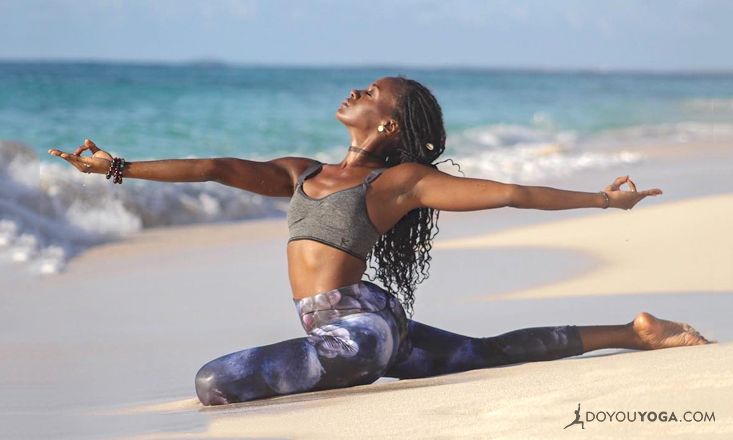Yoga grew up alongside a traditional healing system (Ayurveda) that stresses this: we are ALL unique and therefore, our paths towards healing are infinitely diverse.
Even given this diversity, there are few styles of yoga (by no means exhaustive) that I recommend yogis turn to (styles that I also personally turn to) when dealing with greater levels of stress.
Restorative Yoga
Good for: Recovery from illness, injury, chronic fatigue, mental overwhelm, and major life events/transitions.
Focus: Reset your nervous system while relaxing your body.
What it’s like: Yoga props will entirely support your body so that you can rest.
Intention: To feel completely supported and relaxed.
Renowned yoga teacher B.K.S. Iyengar (author of Light on Yoga) is credited for some of the first restorative yoga postures with students recovering from major health disruptions. Judith Lasater, who studied under Iyengar calls restorative yoga “active relaxation” and recommends it for times before, during, and after major life events such as deaths of loved ones, marriage, divorce, holidays, etc.
It’s interesting to note that even positive life events can put our bodies into a stressful state simply from being a transition that our bodies and minds have not been able to process.
Yin Yoga
Good for: Relieving tension/patterns of tightness in the body, breaking up scar tissue, and practicing the art of slowing down and being still.
Focus: Bring positive stress to the joints and connective tissue to increase flexibility.
What it’s like: You will hold yoga postures for several minutes at a time with or without props.
Intention: Feel intense stretching sensations unfold over time using breath and gravity. Let go of physical patterns of tension/holding.
Yin yoga differs from restorative yoga in its connection to the Chinese meridian system (the same system that underscores practices like acupuncture and acupressure) and its emphasis on myofascial release and joint stress.
Yin yoga can be an excellent style for athletes or office workers—both of whom suffer from inflexibility due to repetitive routines. Bernie Clark (author of The Complete Guide to Yin Yoga) says:
“Consider your will and your body as two dancers, moving in total unison. Too many beginning and even experienced yoga students make their yoga into a wrestling match—the mind contending with the body, forcing it into postures that the body is resisting. Yoga is a dance, not a wrestling match.”
Yoga Nidra
Good for: Regulating heart rate, blood pressure, and metabolism, stabilizing emotions (particularly for those suffering with PTSD), improving focus and feelings of well-being.
Focus: Deep relaxation while awake and conscious.
What it’s like: You will rest in Corpse pose (Savasana) for 20 minutes or longer while receiving guidance to relax your body and elevate your mind.
Intention: Deeply relax your body without falling asleep and tap into your subconscious.
Yoga Nidra is sometimes translated as “yogic sleep” but it is a conscious sleep. While the process varies from teacher to teacher, you will typically be asked to set an intention (sankalpa) before starting the practice. During the practice, you may be guided through visualizations, progressive relaxation, body scanning, sensing opposites, or breathing techniques.
You will be encouraged to stay awake. Dr. Marc Halpern (author of the CD, Yoga Nidra and Self-Healing) credits Yoga Nidra as a chief technique he used for over seven years to achieve remission from Lyme’s Disease.
He says of the practice: “Yoga Nidra is a heightened state of awareness, and a state of consciousness different from waking, sleeping or dreaming. [It] is far more than hypnotherapy, a sleep aid, or an adjunct to psychotherapy.”
The next time you feel ready to throw your hands up, take heart and pull your mat out. Sometimes, all we need is to just be a body breathing on a mat.
Image credit: Tie Simpson





